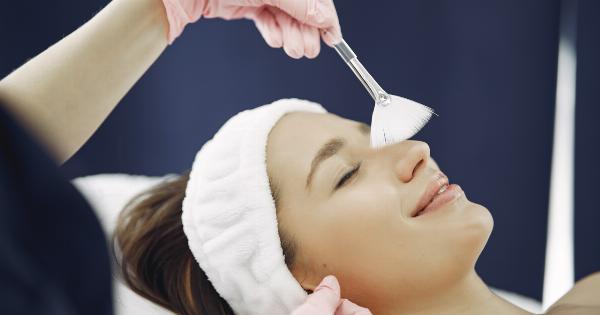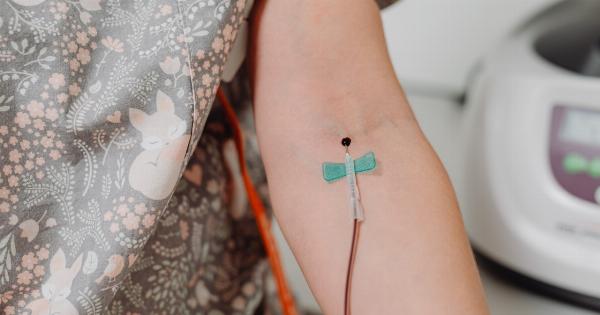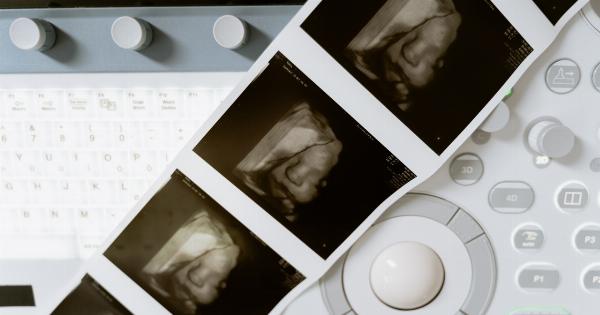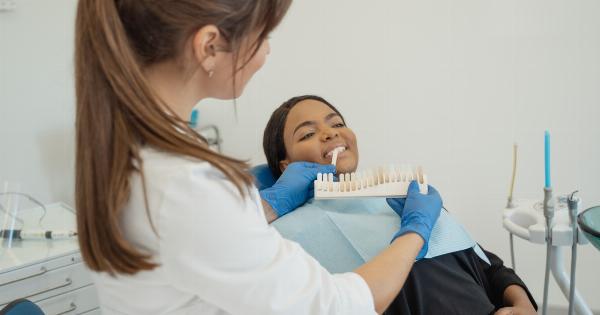Lymphedema is a chronic condition characterized by the accumulation of lymphatic fluid, resulting in swelling and discomfort.
It occurs when there is a blockage or damage to the lymphatic system, which is responsible for draining excess fluid from the body’s tissues. This article will explore the causes, symptoms, and available treatment options for lymphedema.
Causes of Lymphedema
Lymphedema may be classified into two types: primary and secondary. Primary lymphedema is typically caused by developmental abnormalities in the lymphatic system, which may manifest at birth or during puberty.
Secondary lymphedema, on the other hand, is the result of damage to the lymphatic system due to various factors. Some common causes of secondary lymphedema include:.
Injury or Surgery
Any surgical procedure or injury that involves the lymph nodes or lymphatic vessels can disrupt the flow of lymphatic fluid, leading to lymphedema.
This can occur after surgeries such as mastectomy, lymph node dissection, or trauma to the lymphatic system.
Cancer Treatment
Cancer treatment, particularly radiation therapy and lymph node removal, can damage the lymphatic system and cause lymphedema. It is a common complication in individuals who have undergone treatment for breast cancer, prostate cancer, or lymphoma.
Infection
Recurrent or chronic infections, such as cellulitis or filariasis, can damage the lymphatic system and result in lymphedema. These infections block the flow of lymph fluid and contribute to the swelling and inflammation associated with the condition.
Genetic Predisposition
Some individuals may have a genetic predisposition to develop lymphedema. Certain gene mutations affect the development and function of the lymphatic system, increasing the risk of lymphedema.
Examples of genetic conditions associated with lymphedema include Milroy disease and lymphedema-distichiasis syndrome.
Symptoms of Lymphedema
One of the most obvious symptoms of lymphedema is swelling in the affected area, which can range from mild to severe. Other common symptoms may include:.
Heaviness or Tightness
Individuals with lymphedema often experience a sensation of heaviness or tightness in the affected limb or body part. This can be quite uncomfortable and may affect daily activities and mobility.
Restricted Range of Motion
The swelling and stiffness associated with lymphedema can limit the range of motion in the affected area. This can make it difficult to perform certain tasks or engage in physical activities.
Recurring Infections
Lymphedema increases the risk of recurring infections in the affected area. The compromised lymphatic system makes it harder for the body to fight off infections, leading to more frequent episodes of cellulitis or other types of infections.
Hardening or Thickening of the Skin
Over time, the skin in the affected area may become hardened or thickened due to the accumulation of lymphatic fluid. This can make the skin less pliable and more prone to infections or ulcers.
Treatment Options for Lymphedema
While there is no cure for lymphedema, various treatment options can help manage the condition and alleviate symptoms. The primary goals of treatment are to reduce swelling, prevent complications, and improve overall quality of life.
Here are some commonly used treatment approaches:.
Compression Therapy
Compression therapy involves wearing specially designed garments or bandages to apply external pressure on the affected area. This helps promote lymphatic fluid drainage and reduces swelling.
Compression sleeves, stockings, or wraps are commonly used for upper and lower limb lymphedema.
Manual Lymphatic Drainage
Manual lymphatic drainage (MLD) is a specialized massage technique performed by trained therapists. It involves gentle, rhythmic strokes to stimulate the flow of lymphatic fluid and encourage drainage.
MLD can help reduce swelling and improve overall lymphatic function.
Exercise
Regular exercise, particularly activities that promote muscle contractions in the affected area, can aid in lymphatic fluid movement. Low-impact exercises like walking, swimming, or yoga can be beneficial for individuals with lymphedema.
However, it is essential to consult with a healthcare professional or lymphedema therapist before starting an exercise regimen.
Complete Decongestive Therapy
Complete decongestive therapy (CDT) is a comprehensive treatment approach that combines various techniques, including compression therapy, MLD, exercise, and skincare.
CDT is typically carried out by certified lymphedema therapists and aims to reduce swelling, improve lymphatic flow, and enhance overall well-being.
Surgical Intervention
In severe cases of lymphedema that do not respond to conservative treatments, surgical interventions may be considered.
Procedures such as lymphaticovenous anastomosis (LVA) or vascularized lymph node transfer (VLNT) can help reroute or reconstruct the lymphatic system, improving fluid drainage and reducing swelling.
Lifestyle Modifications
Adopting certain lifestyle modifications can help alleviate symptoms and manage lymphedema more effectively.
These include maintaining a healthy weight, practicing meticulous skincare, avoiding extreme temperatures, and protecting the affected area from injuries and infections.
Conclusion
Lymphedema is a chronic condition characterized by the accumulation of lymphatic fluid, causing swelling and other associated symptoms. It can significantly impact a person’s quality of life and require long-term management.
Understanding the causes, recognizing the symptoms, and exploring available treatment options can help individuals with lymphedema effectively manage their condition and improve their overall well-being.


























